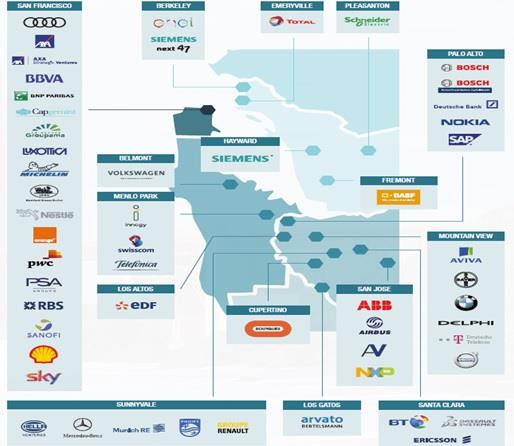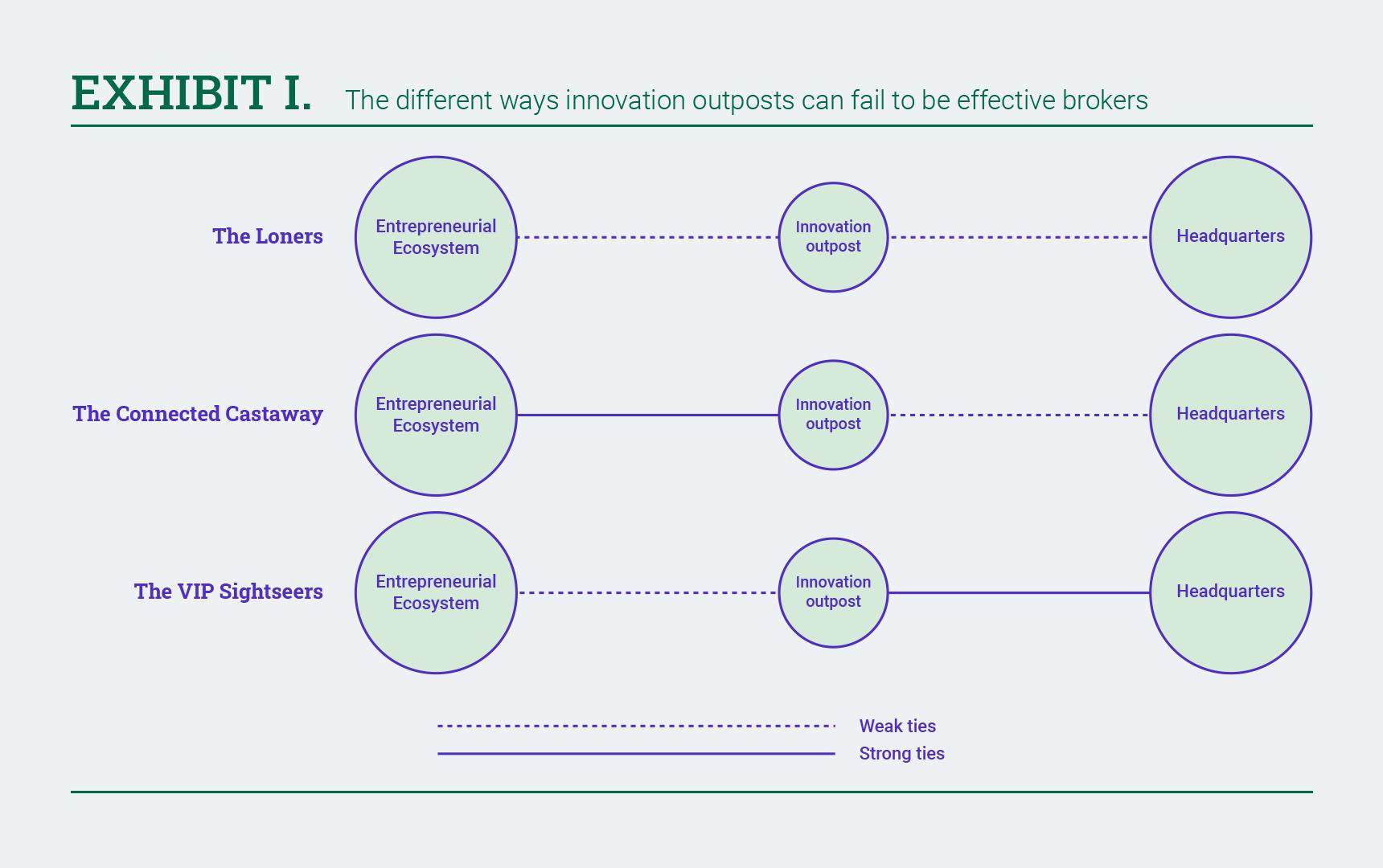by Felipe Monteiro*
The promise of innovation lures many multinational firms to well-established vectors of novel ideas, like Silicon Valley, Tel Aviv or Shenzhen. That pull to an entrepreneurial ecosystem doesn’t always yield the fruit expected back at the head office. Because setting up a full innovation hub that absorbs new ideas and also creates prototypes so far from headquarters is expensive, some MNCs use “innovation outposts” instead. While these often small offices aren’t designed to create innovations, they pick up the latest signals about cutting-edge trends and send them back home. Innovation outposts connect different worlds, that is the novel entrepreneurial cluster and the established firm.
Unable to act on novel ideas themselves, executives at an innovation outpost may feel like hunting dogs because their role is to bark, but someone else must pull the trigger.
Innovation outposts open different avenues to help MNCs transform, but they need the right support at headquarters, equipped with business units to embrace the new ideas they bring in. Incorporating innovation in a safe way is crucial to the strategy of large organisations. My case study about BT is an excellent example of how firms go to different parts of the world to learn. It also showcases the importance of having a “landing pad” for the innovation to germinate in the firm.
The following image shows the variety of firms that nestle into the Valley:

For a recent California Management Review article, Benoit Decreton, Jean-Marc Frangos, Lisa Friedman and I carried out more than 50 semi-structured interviews with managers of 18 multinational companies that opened innovation outposts in Silicon Valley. The vast majority of innovation outposts we selected were part of firms headquartered in France, Germany, Japan, Switzerland and the United Kingdom.
We found three distinct patterns of unsuccessful innovation outposts. This allowed us to devise a clear blueprint on how to tackle their problems and incorporate their ideas within an organisation.
Lacking the right ties
Innovation outposts need to boost signals about cutting-edge trends back into an MNC that has long established processes. To send the right message, you need great messengers, people who can broker between the disruptive new ideas and the established methods at headquarters. We refer to these as effective brokers.
But before learning more about these brokers, we had to uncover the root of innovation outpost failures.

We found three types of ineffective brokers: the loners, the connected castaways and the VIP sightseers. They all had unique problems in how they linked the concepts from their innovation outpost to headquarters.
-Loners lacked connectivity at both ends. Parachuted into Silicon Valley, they didn’t create strong ties with their new network or maintain strong bonds with headquarters. Because they were neither central to the entrepreneurial ecosystem nor to the strategy of the company, they lacked ties and were alone.
-Connected castaways were completely tuned into the Valley but lacked connectivity to headquarters. They sometimes were high-profile people (e.g. keynote speakers at local industry events), but could not manage to transfer these connections back to base. This kind of innovation outpost had the additional challenge of trying to transmit a “not-invented-here culture” back to the company.
-VIP sightseers were closely connected to headquarters but lacked connectivity to Silicon Valley or the local entrepreneurial ecosystem. They were often closely connected to the C-suite, so their ties to headquarters were strong, but they were referred to as “innovation tourists” who arrived in the Valley without contacts on the ground and were unable to create value.
The deep connections necessary for strong ties require an enormous amount of investment, time and commitment. Effective brokers can’t be created overnight.
How to make innovation outposts more successful
Once we had a clear idea of the problems that innovation outposts face, we were able to put together a plan to encourage effective brokers to bring new knowledge to the firm in a palatable form. Effective brokers are highly connected to their internal corporate network and their local entrepreneurial ecosystem. Brokers are often unique individuals, acting as a bridge from one group to another, serving the needs of disparate groups rather than their own.
To prepare the ground for successful innovation outposts, MNCs must:
1. Define a clear and adaptive purpose. Firms shouldn’t create an innovation outpost just because their competitors are doing it. The clear purpose should also be adaptable, depending on how the outpost evolves.
2. Set the right architecture for the outpost and headquarters. Effective brokers must engage with support teams closer to headquarters to direct the development of prototypes or build the business case for collaborations, like launching pads.
3. Establish relevant processes. Strategic purpose is like the facade of a building, and processes and culture are its plumbing and wiring, as A.G. Lafley said. Some necessary processes are:
-pushing external ideas from the ecosystem to headquarters;
-pulling problems from business units to search for external solutions; and
-ensuring commitment from various levels of the organisation.
4. Instil a culture of collaboration and humility. As MNCs establish innovation outposts, they must ask themselves whether they are really ready to engage in open innovation, which is a two-way street.
This plan can get MNCs and innovation outposts to align in terms of purpose and speed. Looking over our interviews with a more dynamic perspective – over several years – we saw that some innovation outposts started out as loners, but over time, they were able to build bridges to the Valley and headquarters.
Create complimentary networks
Although the impact of innovation outposts is hard to quantify – the origin of a firm’s innovation is not something we read about in an annual report – the work done in entrepreneurial ecosystems integrated with headquarters is vital for adaptation and success.
To use these outposts well, firms must employ brokers with complementary skills and networks within the unit and headquarters. But if a firm relies too heavily on a single effective broker, it’s risky in terms of workload and staffing. If that person leaves or is promoted, then all of those hard-earned connections are lost again and that’s not good for business. Nowadays, when we think of innovation, we usually think of disruption, big data, AI or robots. But the core of real success will always be human relationships, which take time to develop and maintain.
*Senior Affiliate Professor of Strategy at INSEAD. He is also the Academic Director of the Global Talent Competitiveness Index. He is the Programme Director for INSEAD’s partner programme with Fundacao Dom Cabral, Advanced Management Program (PGA)
**first published in: knowledge.insead.edu




 By: N. Peter Kramer
By: N. Peter Kramer
